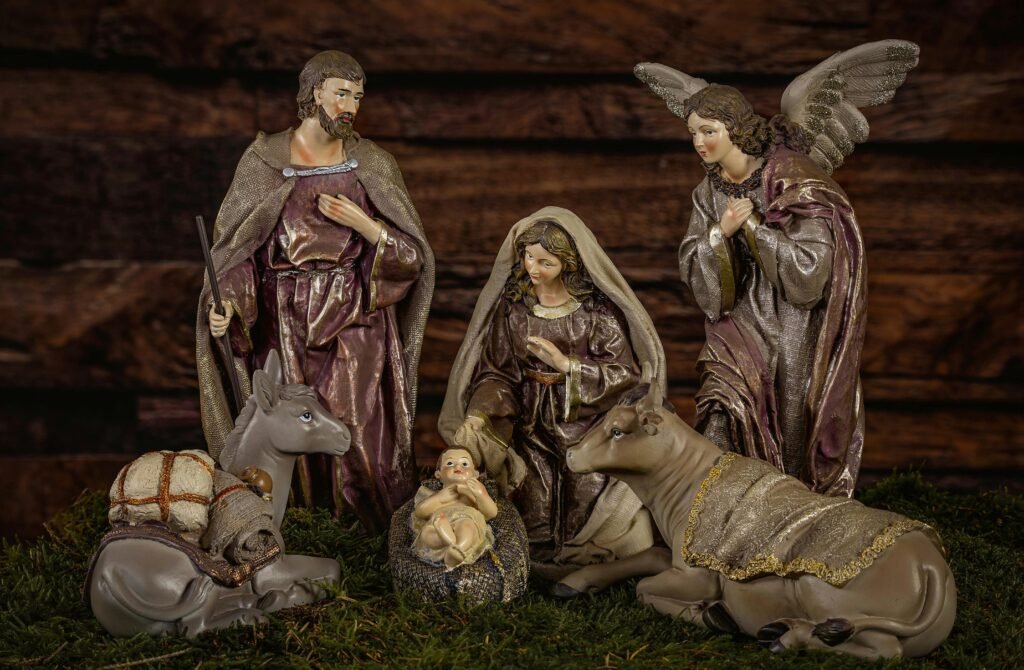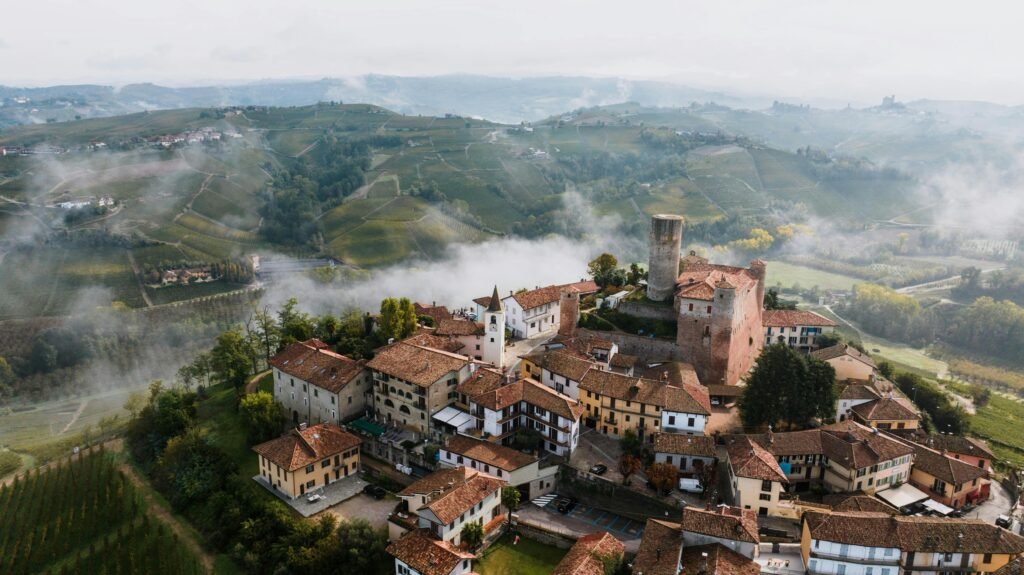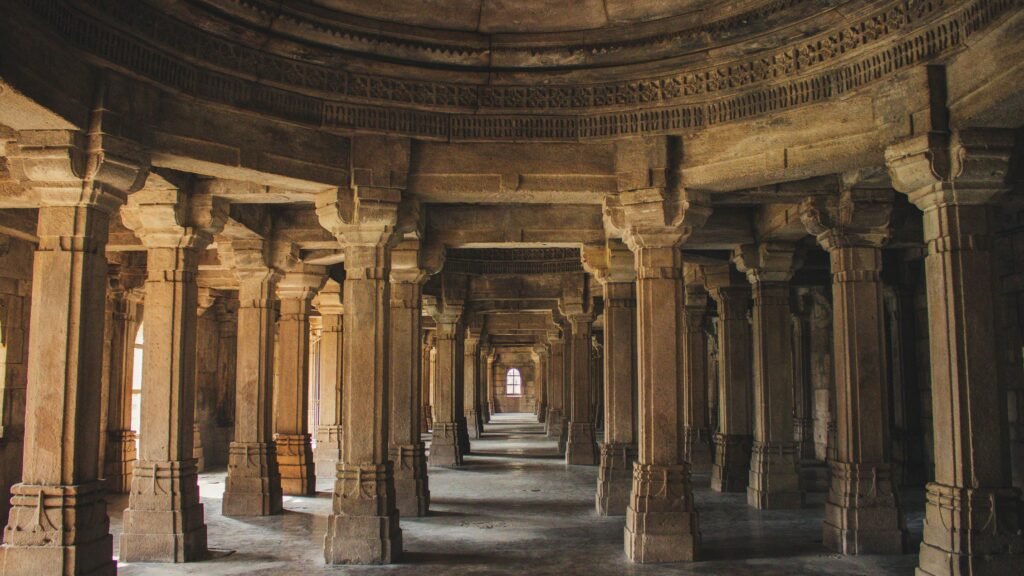Ever stumbled across a nativity scene that made you do a double-take? I’m talking about those incredibly detailed, almost overwhelming displays that seem to tell a thousand stories at once.
That’s exactly what happened to me during my first visit to Naples, when I encountered a presepe napoletano – and honestly, I wasn’t prepared for the emotional impact it would have on me!
Picture this: you’re walking down a narrow cobblestone street, expecting maybe some tourist trinkets, when suddenly you’re face-to-face with what looks like an entire miniature world.
We’re talking about miniature masterpieces that can take months to set up and cost more than some people’s cars.
And trust me, once you understand what makes them so special, you’ll never look at a regular nativity scene the same way again.
The Historical Roots of Naples’ Presepe Tradition
Let me tell you, researching the history of these nativity scenes was like going down the most fascinating rabbit hole ever. I initially thought they were just elaborate Christmas decorations, but man, was I wrong about that assumption.
The whole presepe tradition actually started way back in the 13th century with Franciscan monks.
These guys weren’t messing around when it came to making the nativity story come alive for regular folks who couldn’t read. But here’s where it gets interesting – what started as simple religious education tools in monasteries eventually became the most extravagant art form you can imagine.
San Gregorio Armeno, this narrow street in the heart of Naples, became the epicenter of presepe craftsmanship around the 15th century.
The whole area buzzes with the sound of tiny hammers and chisels as artisans work on figurines that are basically miniature sculptures.
But the real game-changer came during the Bourbon dynasty in the 18th century. King Charles III was absolutely obsessed with presepe napoletano, and when the king gets interested in something, you better believe it becomes a big deal fast.
The royal family commissioned these massive, elaborate nativity scenes that weren’t just religious displays – they were status symbols, works of art, and basically the Instagram of their time.
What Makes Neapolitan Nativity Scenes Uniquely Bizarre
Okay, so here’s where things get absolutely wild, and I mean that in the best possible way. The first time someone explained to me what I was actually looking at in a traditional presepe napoletano, I thought they were pulling my leg.
You know how most nativity scenes are pretty straightforward, right?Mary, Joseph, baby Jesus, maybe some shepherds and wise men.
Well, Neapolitan presepe artists basically said “hold my espresso” and created something completely different. These scenes mix the sacred biblical story with everyday 18th-century Neapolitan life in ways that would make your head spin.
I remember staring at one elaborate presepe for like twenty minutes, trying to process what I was seeing.
There’s the holy family in the center, sure, but surrounding them is this entire bustling village.
We’re talking about fishmongers selling their catch, bakers kneading dough, kids playing with hoops, women gossiping at wells, and tavern keepers serving wine.
But here’s the part that really caught me off guard – you’ll find contemporary figures mixed right in with the biblical characters. I’ve seen presepe with figurines of modern politicians, soccer players, and even cartoon characters standing next to angels and shepherds.
The artisans who create these scenes believe that the nativity story isn’t something that happened once in the past – it’s happening constantly, in every time and place
And get this – death is represented just as prominently as life in these scenes.
You’ll see funeral processions, mourners, and symbols of mortality right alongside celebrations and births.
It sounds morbid, but it’s actually profound. The presepe represents the full cycle of human experience, not just the pretty parts.
The Incredible Craftsmanship Behind Every Figure
Watching presepe artisans at work is like witnessing a symphony of skills — sculpture, painting, tailoring, and even psychology. These aren’t just craftsmen; they’re master artists.
Each figure begins with a wire armature, built up with terracotta for the head and hands. The body is wrapped in hemp fiber, and the clothes? Often made from real silk and brocade — the kind used in high fashion.
I once spent an afternoon with Giuseppe, a veteran artisan from San Gregorio Armeno. With incredible precision, he painted lifelike expressions on thumb-sized faces, each one taking over two hours. He’s been doing this for forty-three years.
What sets these figures apart is their anatomical realism: correct proportions, age-appropriate features, muscle definition, and posture. Even the hands — notoriously difficult to sculpt — are made to hold miniature tools, food, or instruments.
Some of the most elaborate figures, worth thousands of euros, have moving parts and interchangeable outfits. One collector’s musician figure came with six tiny instruments and multiple costumes.
Most impressive of all is the historical accuracy. Artisans study 18th-century clothing and consult historians to ensure every detail is authentic. It’s not just a craft — it’s a form of cultural preservation and scholarly devotion.
Decoding the Hidden Symbolism and Meanings
This is where my mind was completely blown. What I thought was just decorative flair turned out to be a layered symbolic language that’s been developing for centuries.
Every single figure in a traditional presepe napoletano has meaning — even the ones that seem totally secular. The fishmonger? He represents early Christians and the abundance of Christ’s teachings. The baker symbolizes the Eucharist and spiritual nourishment. I learned all this from an elderly woman who runs a tiny presepe museum in Naples. She told me the wine seller stands for the blood of Christ, the cheesemaker for purity and maternal care, and the street kids for innocence and the kingdom of heaven.
But it goes deeper. The positioning of figures matters too. People moving toward the Holy Family symbolize souls seeking salvation. Those walking away? They’re turning from divine grace.
Then there’s the cycle of life and death — babies being born, funeral processions, all in the same scene. It’s not morbid; it’s about eternal life and spiritual rebirth.
Even the craftsmen and food vendors have meaning. The shoemaker represents protection on the journey of faith, the musician offers praise, the shepherd mirrors Christ. And those demons you sometimes spot?
And the water! Every traditional presepe has flowing water — tiny pumps running streams, fountains, wells. It’s not just pretty — it represents baptism, purification, and the flow of divine grace through the world. Honestly, once you start to see the symbolism, it transforms the whole experience.
San Gregorio Armeno
Walking down San Gregorio Armeno for the first time was honestly overwhelming.
First off, this place is active year-round, not just during the Christmas season. That was my first surprise. In July, when it’s sweltering hot and most people aren’t thinking about Christmas, the workshops of San Gregorio Armeno are buzzing with activity. Artisans are already working on pieces for the next Christmas season.
The street itself is barely wide enough for two people to pass comfortably, but it’s packed with workshops, galleries, and vendors selling everything from simple figurines to elaborate custom pieces. The smell of paint, glue, and clay mingles with the sound of tiny tools working on delicate details.
I’ve probably spent more money than I should have on this street. My first purchase was a simple shepherd figure that cost 15 euros. By my last visit, I was commissioning custom pieces that cost… Well, let’s just say my family questioned my financial priorities.
Meeting the Masters of the Craft
Meeting the master craftsmen (they call them presepari) was like stepping back in time. These aren’t just artists — they’re keepers of tradition. Salvatore Scarano, whose family has been making presepe figures for six generations, showed me tools that belonged to his great-great-grandfather. The handles are worn smooth from decades of use.
Rivalries and Reinvention
The competitive aspect of presepe culture really surprised me too. These artisans don’t just cooperate — they compete. There are annual competitions, informal rivalries, and serious debates about techniques and authenticity. I witnessed a heated discussion between two craftsmen about the proper way to create 18th-century nobleman clothing that lasted over an hour.
But what really impressed me was how these traditional artisans have adapted to modern influences while maintaining their core techniques. During the 2014 World Cup, every workshop was producing soccer player figurines. When a politician becomes particularly notorious, you’ll find figurines of them in presepe scenes within weeks.
The Presepe Calendar and Street Life
The economics of this street fascinate me too. Some workshops are clearly struggling to survive in the modern economy, while others have found ways to thrive by attracting collectors and tourists. The most successful ones offer workshops, custom commissions, and even ship internationally.
January through August is production time, September and October are for exhibitions and competitions, November through December is pure chaos as collectors and tourists descend on the street.
Setting Up Your Own Neapolitan-Style Nativity Scene
The most important thing I learned is that landscape matters more than I initially realized.
You need different levels, pathways, and architectural elements to create the sense of a living village.
I spent way too much on figurines before realizing I needed to invest in proper backdrop materials, lighting, and structural elements.
Lighting was probably my biggest challenge.
These scenes require multiple light sources to create realistic day/night cycles and atmospheric effects.
I initially used regular Christmas lights, which looked terrible.
Proper presepe lighting uses warm LED strips, tiny spotlights, and even fiber optic systems for stars and celestial effects.
The scale issue caught me off guard too. Neapolitan presepe figures come in specific scales – usually 6, 8, 10, or 12 centimeters.
Mixing scales looks amateurish, but maintaining scale consistency while building a complex scene requires serious planning.
Common mistakes I made include overcrowding (more figures doesn’t equal better presepe), ignoring seasonal additions (these scenes evolve throughout the year), and underestimating the time commitment.
A proper presepe napoletano takes weeks to set up properly, not hours.
Conclusion
The Neapolitan presepe isn’t just a Christmas decoration – it’s a window into the soul of Naples itself.
These bizarrely beautiful nativity scenes capture something essential about human nature: our ability to find the sacred in the everyday, the divine in the mundane.
After years of studying and collecting presepe napoletano, I’ve come to understand that their power lies not in their religious symbolism alone, but in their celebration of community, tradition, and the beautiful chaos of human life.
They remind us that the sacred story doesn’t happen in isolation – it unfolds in the midst of our daily struggles, joys, and ordinary moments.
The craftsmanship behind these miniature worlds represents something precious that our fast-paced, digital world desperately needs: patience, attention to detail, and respect for tradition combined with creative innovation.
Every tiny figure tells a story, every scene represents hours of careful work, and every Presepe preserves cultural knowledge that’s been passed down for centuries.



